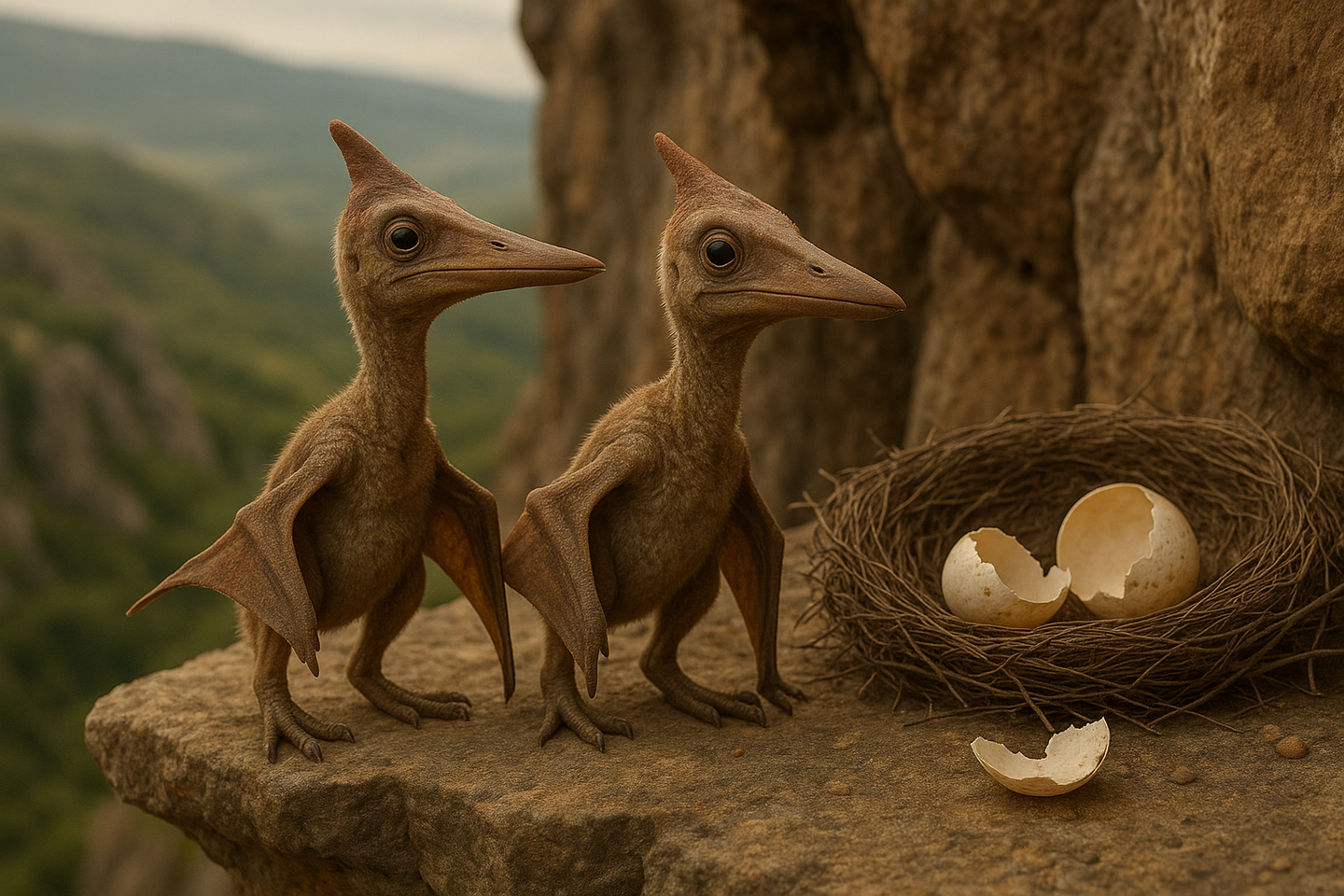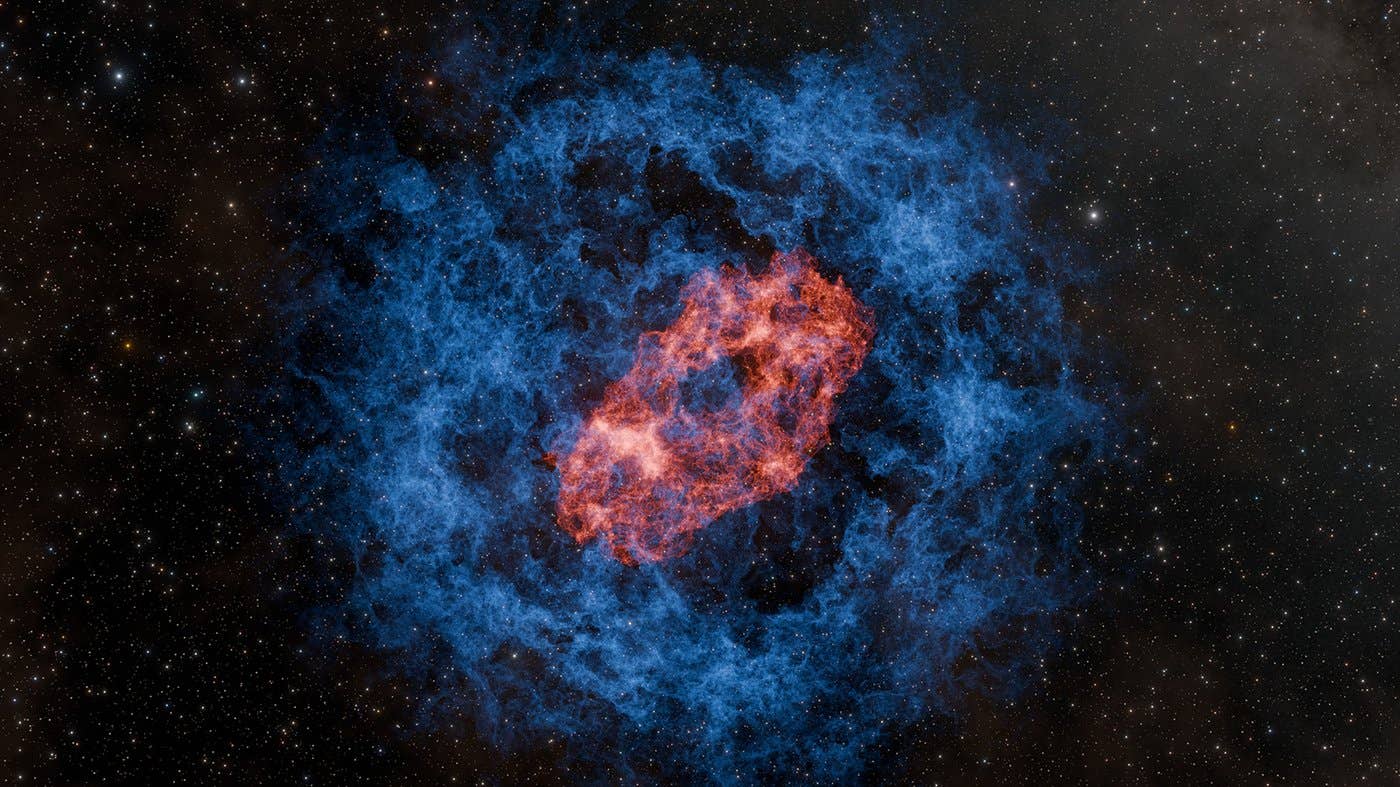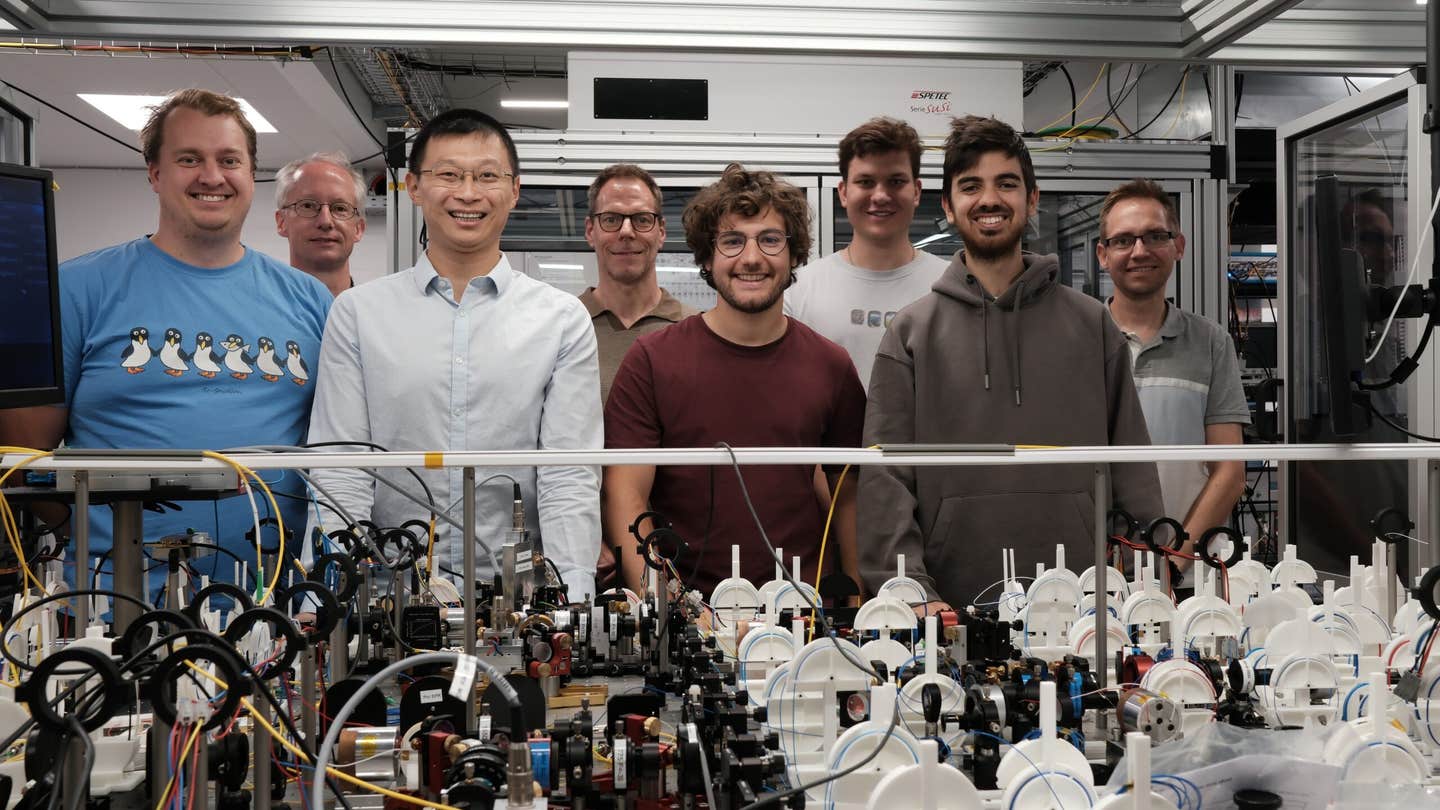Two 150-million-year-old baby pterosaurs changed what we know about life and death
Fossils of two baby pterosaurs reveal how powerful storms shaped their fate and the fossil record of the Jurassic skies.

 Edited By: Joseph Shavit
Edited By: Joseph Shavit

Two tiny pterosaurs, lost to a Jurassic storm, are rewriting what scientists know about prehistoric skies. (CREDIT: AI-generated / The Brighter Side of News)
In the smooth limestone area of southern Germany, where lagoons glittered beneath a tropical sun, scientists are studying two tiny fossils, speaking across 150 million years. These remains are from baby pterosaurs, wing spans no larger than your hand, who died almost as quickly as they were born.
Preserved in the Solnhofen limestone beds of Bavaria, these small creatures, dubbed Lucky and Lucky II, may explain one of the oldest mysteries of paleontology: why so many fossils from this site are of baby pterosaurs and not adults.
The discovery, led by researchers from the University of Leicester, vividly imagines life and death in the Late Jurassic. It described more than just two shattered wings, but a story about storms, shallow human bodies, luck, and the strength of a gust was vital to survival.
Tiny Aviators of the Jurassic
Lucky and Lucky II belonged to Pterodactylus antiquus, the first pterosaur named by science. They hatched in what was the Solnhofen Archipelago, a chain of islands surrounded by warm, shallow lagoons. Despite their size, the hatchlings had all the right stuff to fly. The bones, expertly fused joints (nesting and sleeping), and long wings indicate they could leave the nest shortly after hatching.
That ability may have often been both a blessing and a curse. Unlike birds of today, which rely on parental aid, pterosaurs were precocial animals, something humans know as seen from birth—birds that can leave the nest at birth.
These baby pterosaurs probably flew into the air just days, even hours, after leaving the egg. But this new research shows that the risks associated with flying as an infant were significant.
The Fatal Gust
Both fossils contained clean, oblique breaks in their upper wing bones, the humerus, indicating that they broke as a result of some strong twisting force while flying. They didn't break because they were colliding with other animals or being eaten; the breaks were consistent with what would happen to a baby pterosaur caught in a sudden gust of wind.
Rab Smyth, the lead author and researcher at Leicester’s Centre for Palaeobiology and Biosphere Evolution said, "Pterosaurs had incredibly lightweight skeletons. Hollow, thin-walled bones are great for flying but terrible for fossilization. The chances of one being preserved are slim to begin with, and for it to tell you how the animal died is even rarer."
When these gusts hit, both hatchlings probably lost control and fell to the stormy lagoon below. The waves consumed their fragile bodies, and the same storms that caused their death eventually caused them to be preserved. The hatchlings began to sink and were buried by fine layers of lime-rich mud, and over time those sediments hardened into stone, preserving the details of their final moments so vividly.
How Storms Shaped the Fossil Record
The Solnhofen limestone is known for fossils like Archaeopteryx, the first bird, and many delicate marine organisms, but nearly all pterosaur fossils from this locality are small and of young age, and larger adults appear only in fragmentary form. For decades, researchers assumed that the region was primarily inhabited by juvenile species. Smyth's finding changed that narrative.
The investigators decided that Solnhofen's abundance of juvenile fossils didn't stem from small pterosaurs settling there, but instead that they were more likely dying there. Most adults had probably settled on nearby islands and were able to weather the frequent storms that came across the lagoons. Hatchlings, however, wouldn't have had the ability or skills to withstand the wind.
These cataclysmic storms were both killers and preservers. The very turbulence that killed the hatchlings stirred the fine sediments that quickly buried them, sealing their remains before decay or scavengers had a chance to destroy them. This process explains the incredible number of perfectly preserved juveniles and the very low number of adults in the Solnhofen deposits.
A New Way of Reading Ancient Deaths
To better understand these patterns of preservation, the investigators created what they termed the Catastrophic–Attritional Taphonomic (CATT) model. This model provides paleontologists with a method for determining whether fossils formed as a result of sudden mass mortality or from slow accumulation over time.
Using this model on the Solnhofen fossils shows two primary modes of death and fossilization: in the "catastrophic" mode, a violent storm or toxic bloom led to rapid mortality and preserved animals in pristine condition, while "attritional" layers were deposited slowly with intervals of both active accumulation and stasis. The attritional mode represents individuals who died separately in the same area over long intervals of time, like years or centuries.
Most fossils of Pterodactylus conformed to the catastrophic mode, while other pterosaurs, like Rhamphorhynchus, showed more of an attritional pattern. This shows that different species used different habitats; some were near lagoons that were likely to have storms, and others were over open water, where some individuals died at a slower pace.
Growing Up in a Dangerous World
Despite their fragile state, pterosaur hatchlings grew quickly. Growth rates are evident in bone studies that show the young continued to grow rapidly after hatching, helping them to improve the strength in their wings while expanding their range. Having a short life span of early independence may have helped their species to spread throughout the Jurassic world by moving from island to island without a parent to provide food or protection.
But early independence came with a cost; many young pterosaurs, such as Lucky and Lucky II, didn’t survive their first flights. As co-author, Dr. David Unwin explained, “When Rab found Lucky we were really excited but thought it was just a one-off. Then a year later, when he found Lucky II than we knew it wasn’t a fluke, it was evidence of how these animals were dying. When we scanned Lucky II with ultraviolet light, it literally jumped out of the stone at us, and neither of us will ever forget that experience.”
Lessons From the Limestone
The Solnhofen fossils tell both a scientific story and a deeply human story; each fragile bone tells the story of struggling to live in an environment shaped by wind and water. Ironically, the stormy conditions that took the lives of these hatchlings also created an ideal environment for them to be exquisitely preserved, so that their last moments of life endured until the extinction of their species.
Their presence reminds scientists that the fossil record is biased; they are the creatures most likely to be fossilized, not necessarily the most abundant in life. Utilizing models such as CATT, researchers can determine which fossils represent patterns of real population abundance and which fossils are the result of chance events, such as storm or flood events.
Practical Implications of the Research
This research not only re-shapes the narrative of pterosaur history but also improves how scientists interpret fossil evidence from other localities throughout the world. The CATT model provides a scientific framework to ascertain if fossil beds formed from mass mortality events, or through accumulation over time, and provides paleontologists with evidence of ancient ecosystem reconstruction.
And perhaps on a broader spectrum relating to humanity, this research contributes to our understanding of the fragility of life and how that life is preserved.
It shows that disaster and discovery are often intertwined, and how death in one era of life can describe another. These small fossils remind us, that even the tiniest life can tell the biggest of stories.
Research findings are available online in the journal Current Biology.
Related Stories
- New discovery offers scientists a rare glimpse into how pterosaurs lived and died
- Breakthrough discovery ends the debate on how Pterosaurs flew
- Pterosaur discovery solves ancient feather mystery
Like these kind of feel good stories? Get The Brighter Side of News' newsletter.
Joshua Shavit
Science & Technology Writer and Editor
Joshua Shavit is a Los Angeles-based science and technology writer with a passion for exploring the breakthroughs shaping the future. As a co-founder of The Brighter Side of News, he focuses on positive and transformative advancements in AI, technology, physics, engineering, robotics and space science. Joshua is currently working towards a Bachelor of Science in Business and Industrial Engineering at the University of California, Berkeley. He combines his academic background with a talent for storytelling, making complex scientific discoveries engaging and accessible. His work highlights the innovators behind the ideas, bringing readers closer to the people driving progress.



